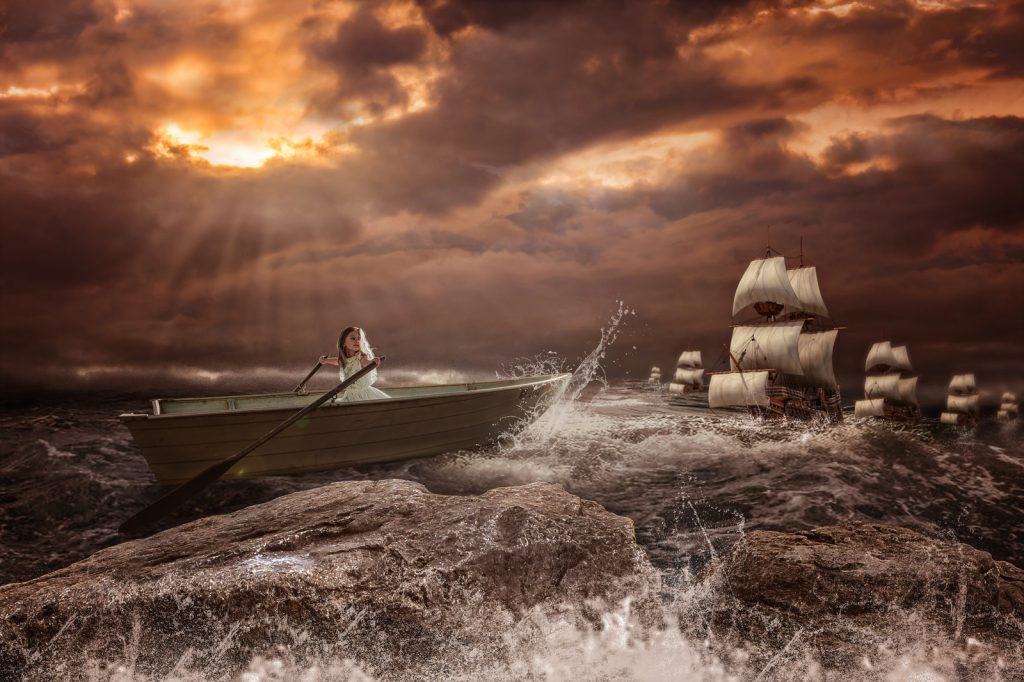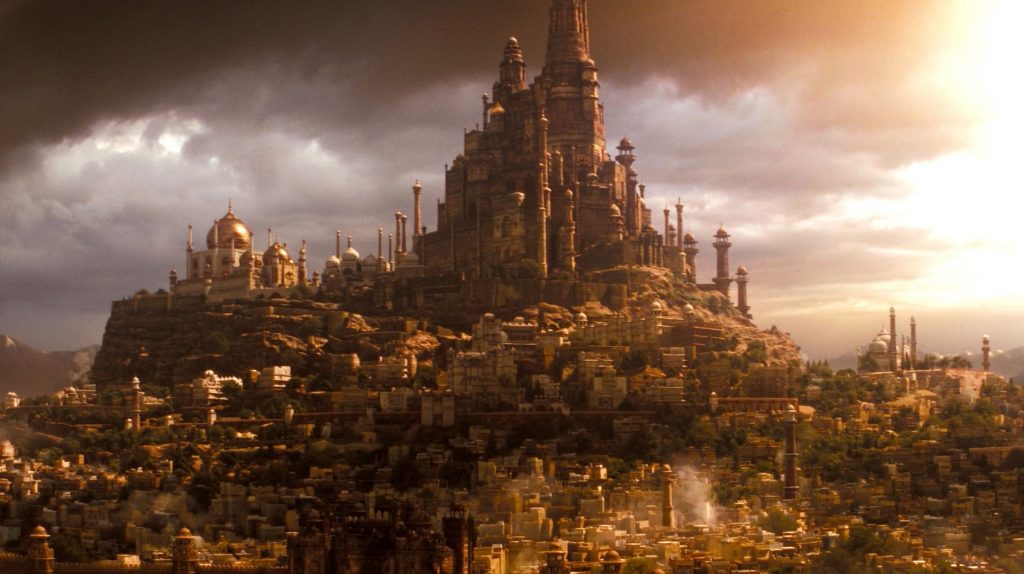
A composite combines two (or more) photographs to create one – rather convincing – final image. This is rendered significantly less complicated thanks to the advent of digital photography, digital editing, and an ever expanding set of features and tools available with modern software and apps.
This photographic sorcery didn’t start with the advent of Photoshop – in fact, quite the opposite. Before digital photography was even a twinkle in Steven Sasson’s eye, composite portraiture was already being practiced in the 1880’s when Sir Francis Galton invented a technique to take multiple exposures on the same photographic plate.
In 2017, rather than using multiple exposures on the same piece of film, photographers and designers generally take separate images and blend them seamlessly using layers, masks and blurs.
Why use composite images?
Composite images can be incredibly useful when you’re looking for a way to editorialize your visual content on everything from blog articles to products to art projects. There are many reasons for this. Firstly, composite images tend to be very compelling.
Often, the final composite image juxtaposes objects or living things in unlikely (or impossible) combinations. Sometimes, the scene depicted is plausible, but would be too difficult to capture in a candid moment. Other times, composite images are used to blend several still shots of landscapes and cityscapes to make use of the best lighting, combining them to make a stunning but technically impossible photo.
Composite images can also evoke and imply the passing of time in a clear, quantum physics kind of way that long exposure simply cannot achieve.
Classic Composite Images
The “Clone Wars” Image
Copy or “clone” yourself to create a time-lapse style image, or to portray the different emotional states or “sides” of yourself. This style of composite image can be funny, dramatic, or subtle, depending on what you’re trying to achieve.

Set up your camera in one spot. It will be important to take as many different poses within the scene as possible while the lighting is the same. Make sure not to move or disturb main elements in the scene (like the placement of a chair, a vehicle or other large elements).
The “We Were The Only Ones Here” Image
Using a timer on vacation to take shots means everyone can get in the picture – but that doesn’t mean you actually want EVERYONE in the picture. Remove pesky tourists, photobombers and pedestrians from your vacation photographs by creating a composite image.
Again, set up your camera in a fixed spot. You’ll shoot several takes of say, the World’s Largest Ball of String. When it comes time to grab a shot with you or your loved ones, even if someone else happens to veer into your frame, you can simply remove them using the other shots you took to mask them out of the image.
The “What A Coincidence I Snapped This At The Perfect Time” Image
This will come in handy when you’ve shot several pictures (say, at your kid’s birthday party) but there are “perfect” elements spread across several frames, you can take steps to amalgamate and create that perfect picture.
If your Aunt Rose has her eyes closed in every frame EXCEPT the one where everyone else is poised perfectly for that candid shot you were aiming for, you can replace her with the better version for a perfect image. Just cut her (or her surroundings) out, paste, and blend.

The “Surreal, Magic Is Real” Image
Another type of composite image will inspire imagination.
Combining impossible elements to create dreamscapes, pigs that fly, or outfits that seem to be made of a fabric of a physical landscape are all examples of what you can achieve when you’re mixing different images. These composites will feel surreal, artistic, and maybe even magical.
Tips while you shoot
- Try to make sure the lighting in both images you intend to use have the same type and style of lighting. A cat photographed indoors with dim lighting will not integrate with a photograph of a mouse taken outside in the sun. By matching your lighting conditions, you’re already a step ahead of the game.
- Consider using a green screen or a solid, high contrast background behind your subject. It becomes a complicated process to try to “cut out” your subject matter if there is a busy, or low contrast background.
- Location, location, location. Some locations will make it much easier to cut out elements, or blend elements. For example, using multiple takes from a scene with an ocean full of high, fast moving waves may prove to be more difficult to keep consistent than a long, flat desert.
- You don’t need to own incredibly expensive camera equipment, and you can shoot the pictures you will use for composites with your smartphone. In some cases, a tripod will prove to be both helpful and necessary, but you can find the attachment for your phone for under ten bucks.

Tips while you edit
- If you’re using your phone or tablet, for Juxtaposer is a great option to create composite images on the go, albeit somewhat less polished than what can be accomplished on a desktop with professional grade editing suites, like Adobe Photoshop or Corel DRAW.
- Watch videos, and read tutorials. There are many ways to start creating a composite and depending on the effect you’re trying to achieve, everything from using transparencies, masks, cut out functions, layers and more will be employed in various steps of the process.
- Smudge tool is your friend. If things are a little on the imperfect side they will look more real, so avoid hard lines or unnatural contrasts between the elements you are cutting out and incorporating into a new background.
Composite images on the move.
The new composite image is the cinemagraph. In order to create this eye catching mix of static and moving visual elements, you’ll be using similar techniques as when you’re building a still composite image.
You start with some high quality footage, and allow certain parts of the video to remain “still”, while other aspects (like say, liquid pouring from a pitcher) will move. It’s a whole new approach to video storytelling, and with apps like Flixel, much easier to achieve than you’d expect!
It’s all about trial and error.
Composite images can be a powerful way to change the narrative on your website, blog, or social media channels. It can impart a sense of humor, wonder or possibility – and that’s the same mindset you should have when you start making your own.Trial and error is the name of the game here, as you learn new methods to blend images and come up with new creative concepts, your technique and composition will improve along the way.